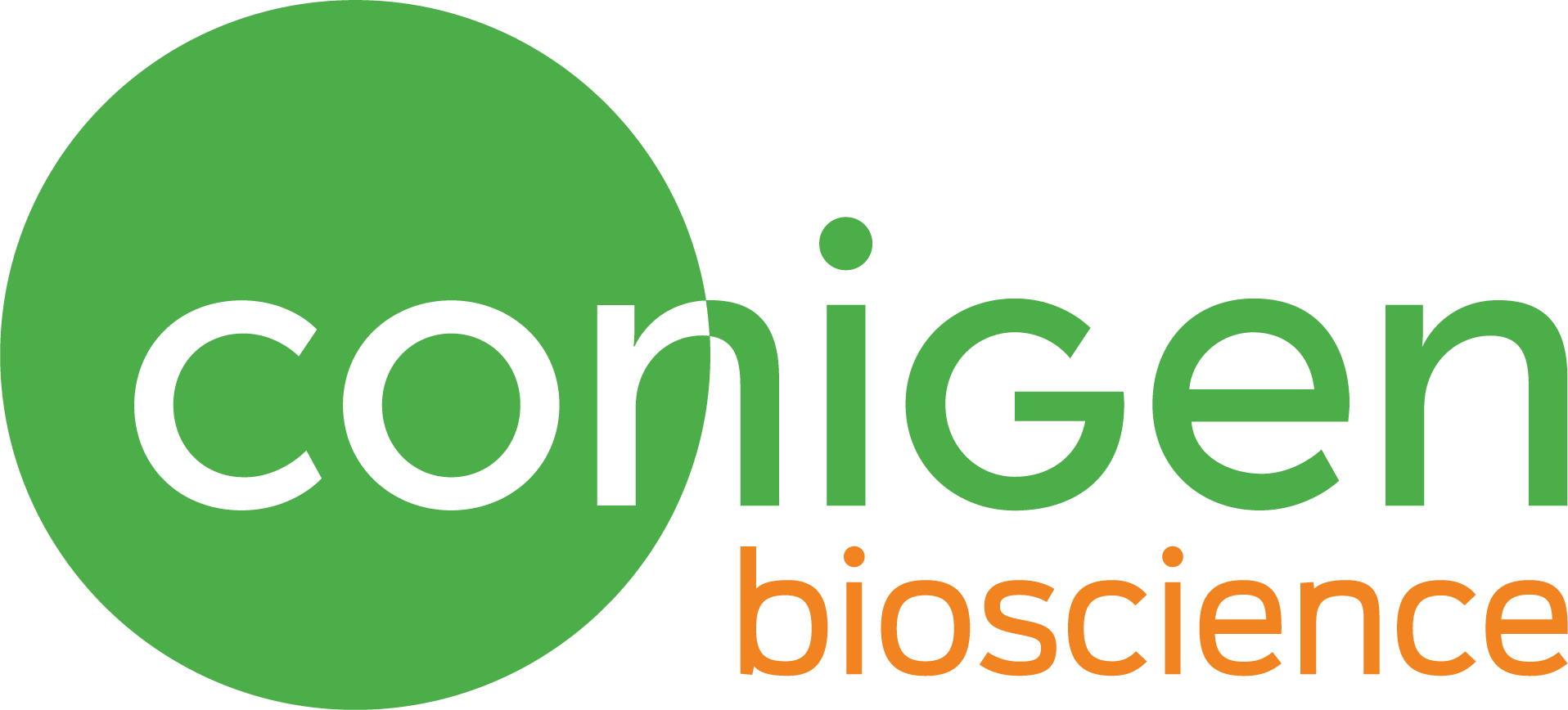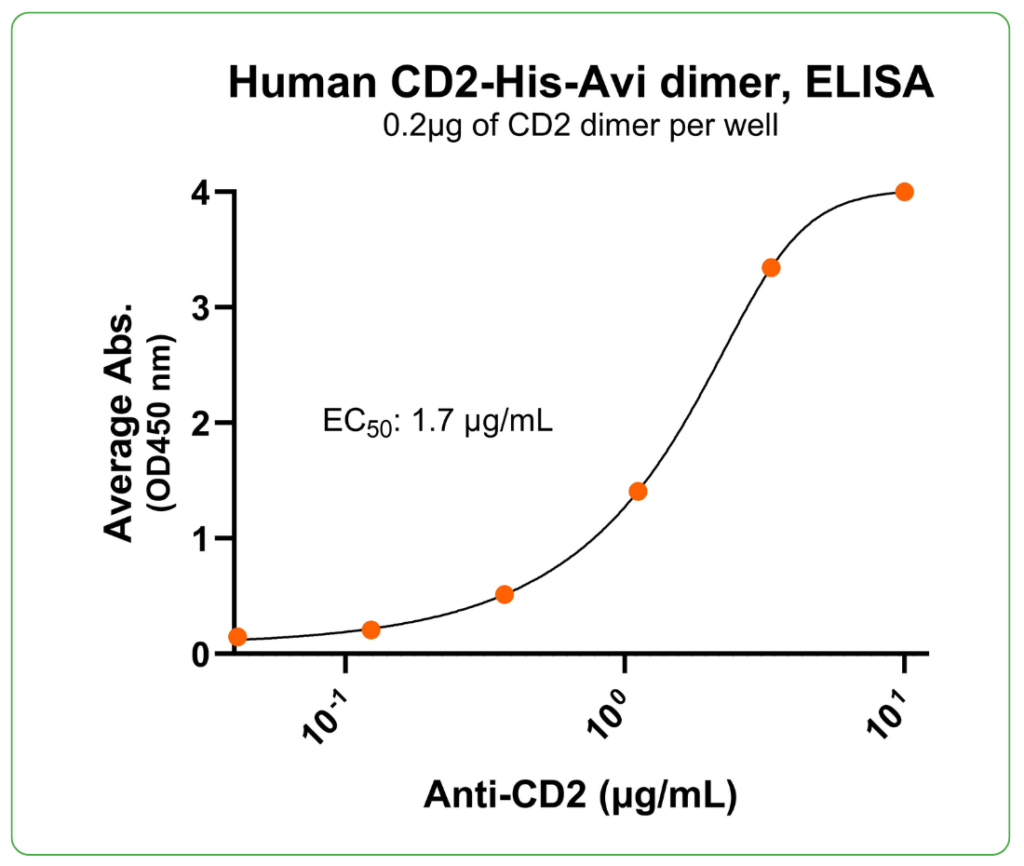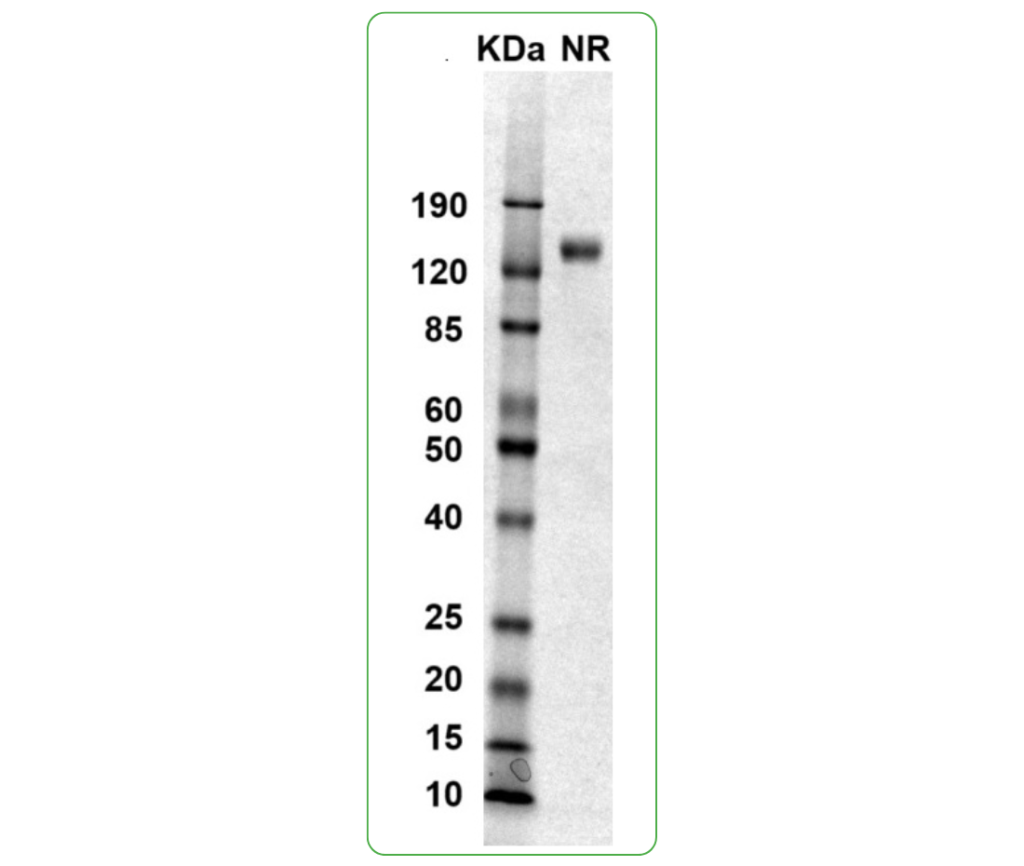Bioactive, Recombinant Human CD2 Protein Dimer, His-Avi Tag
| Product Code | CSP-24095-03 |
| Expression Host | HEK293T |
| Verified Applications | ELISA for CD2-specific antibody binding assay and BLI for lymphocyte function-associated antigen-3 (LFA-3) ligand protein binding assays. |
| Suggested Applications | SPR for CD2-specific antibody and LFA-3 protein binding assays. Animal immunization, RUO. |
| Purity | Greater than 90% dimer form as determined by SDS-PAGE under non-reducing condition |
| Amino Acid Range | K25-D209 |
For Research Use Only (RUO)
Price: $125.00
Price: $195.00
Price: $350.00
Price: $750.00
Price: $2,500.00
Bioactivity – Antibody Binding
Immobilized human CD2-His-Avi protein dimer (CSP-24095-03) at 2 μg/mL (100 μL/well) can bind anti-human CD2 monoclonal antibody with half maximal effective concentration (EC50) range of 0.8-3.3 μg/mL (QC tested).
SDS-PAGE
MW: Molecular Weight marker reduced condition
NR: CD2 dimer under non-reducing condition
Specifications
Formulation: 0.22μm filtered PBS, pH 7.4
Shipping: Frozen Dry Ice
Storage: -80°C
Human cluster of differentiation 2 (CD2), is a Type I transmembrane glycoprotein and a member of the immunoglobulin superfamily. The recombinant CD2 protein dimer (CSP-24095-03) is a cis-homodimer (cis-dimer) and contains a CD2 extracellular domain (UniProt# P06729, amino acids Lys25-Asp209) fused with a proprietary cis-dimer motif followed by a tandem His-Avi tag at the C-terminus. This dimeric protein is expressed in HEK293T cells. The recombinant human CD2 protein dimer is bioactive and can bind to LFA-3. It also binds CD2-specific antibodies. This CD2 dimer can be used as an antigen for in vitro assays and antibody screening, and as an immunogen for immunization to generate antibodies targeting more conformational epitopes.
Protein Name: CD2
UniProt #: P06729
Predicted Molecular Weight: 62 kDa
SDS PAGE Molecular Weight: The migration range of the protein dimer with glycosylation under non-reducing condition is 120-190 kDa on SDS PAGE.
Protein Construct: CD2 protein dimer contains a CD2 extracellular domain (UniProt# P06729) fused with a proprietary cis-dimer motif followed by a tandem His-Avi tag at the C-terminus.
Background
Human cluster of differentiation 2 (CD2), is a Type I transmembrane glycoprotein and a member of the immunoglobulin superfamily. CD2 is also known as T-cell surface antigen T11/Leu-5, lymphocyte function-associated antigen-2 (LFA-2), lymphocyte function-associated antigen-3 receptor (LFA-3 receptor), sheep red blood cell receptor (SRBC), CD2 molecule, erythrocyte receptor, and rosette receptor. CD2 contains an extracellular domain with two immunoglobulin-like domains (Ig-like), a transmembrane domain, and a cytoplasmic domain. CD2 is expressed on human T cells and natural killer (NK) cells. CD2 interacts with itself or other adhesion molecules, such as lymphocyte function-associated antigen-3 (LFA-3/CD58), to play an important role in mediating cell adhesion and signal transduction. CD2 is expressed in a variety of cancer cells, including T-cell lymphomas and leukemias and is also found in B-cell neoplasms. CD2 expression can serve as a prognostic biomarker for these types of cancer. CD2 is an emerging target of cancer therapeutics.
Alternate Names: T-cell surface antigen T11/Leu-5, lymphocyte function-associated antigen-2, LFA-2, lymphocyte function-associated antigen-3 receptor, LFA-3 receptor, sheep red blood cell receptor, SRBC, T11, CD2 molecule, erythrocyte receptor, rosette receptor


